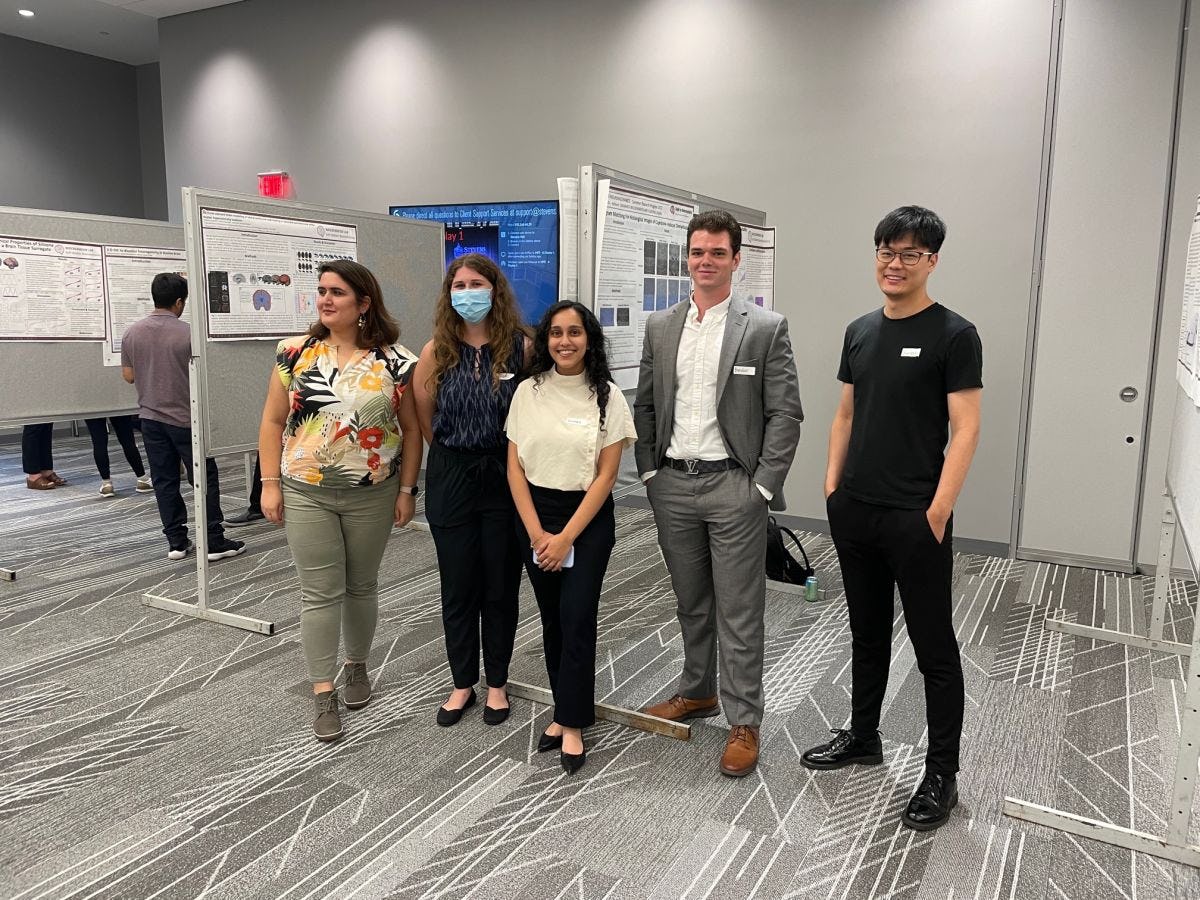New Research Directions Shared at the 2022 BRAIN Conference May Help Address Brain Health Challenges
Interdisciplinary, collaborative research is a key to improving quality of life for patients with neurological diseases
The Center for Neuromechanics at Stevens Institute of Technology hosted more than 40 attendees, including researchers and students, at the 2022 BRAIN Conference. The theme of the Conference, which took place at the University Center Complex earlier in August 2022, was Boosting Research Activities in Neuromechanics.
The conference brought together researchers and clinicians from the greater New York metropolitan area to spark a dialogue that will lead to innovative research projects addressing medically relevant brain health challenges.
“Understanding and explaining how the brain works requires input from many different science fields,” said Johannes Weickenmeier, Director of the Center for Neuromechanics at Stevens. “The primary goal of the gathering was to facilitate the collaboration between engineers and clinicians to bring basic science into the clinical setting.”
2022 BRAIN Conference participants ranged from mechanical, biomedical, and electrical engineers to computer scientists to physicians, clinicians, and medical scientists.
Speakers came from various institutions to give updates on their cutting-edge research. Topics included mental health, aging, Alzheimer's disease and related dementias, neurosurgical intervention, and rehabilitation.
An agenda focused on sharing ideas and advancing brain health research
“As our population is progressively getting older, many will face challenges related to cognitive decline and loss of motor function due to the brain's gradual degeneration,” explained Weickenmeier.
Diagnosing brain health changes early while intervention is most effective is a big field of research, he said. "At the same time, we have become much better at treating many brain-related diseases and need improved post-critical care to ensure better long-term recovery and rehabilitation."
One of the key messages of the 2022 BRAIN Conference is that in sharing new research directions, researchers and clinicians from various disciplines can work together to help address brain health challenges.
Collaborative research is also at the heart of the Center for Neuromechanics at Stevens, a first-of-its-kind interdisciplinary research center primarily focused on the mechanical behavior of the neural system. Researchers at the Center investigate the function, structure, and health of the human brain and utilize engineering applications to improve the quality of life for people with neurological disorders.
The conference started with a keynote lecture from Robert Scheidt, Professor of Biomedical Engineering at Marquette University and the Medical College of Wisconsin. Scheidt spoke on wearable technologies to promote recovery of upper extremity function after stroke.
Individual talks covered topics diverse as deep brain stimulation for the treatment of major depression disorder, neurosurgical stent deployment to treat aneurysms and stroke, movement biomechanics to characterize turning, basic research in frontotemporal dementia, and the use of artificial intelligence to measure anything from conscience in ICU patients to detecting neurodegeneration from speech.
A panel discussion, “Role of Centers to Facilitate Cross-Disciplinary Research Activities in Brain Health,” with the directors of the Nash Family Center for Advanced Circuit Therapeutics, Helen Mayberg, and Sinai BioDesign, Benjamin Rapoport, both from Mount Sinai, as well as the executive director of the Rutgers Brain Health Institute, Eldo Kuzhikandathil, discussed how to facilitate and grow innovative and ambitious large-scale research projects to ultimately advance patient care and provide new treatments for prevalent neurological diseases.
The conference concluded with a student poster competition that showcased the work of the Center for Neuromechanics Summer Research Fellows. The Center launched its summer research program this year and supported 13 undergraduate and graduate students to perform independent research in the labs associated with the Center.
Educating and training the next generation of engineers and scientists is a major objective of the Center, explained Weickenmeier. "Learning about the brain and discovering how engineers can contribute to our basic understanding of neuromechanics and neurological diseases is an important aspect of our mission,” he said.
The Conference was made possible by a SPRINT Program (Spearheading Proposals by Interdisciplinary Teams) grant. SPRINT aims to support the planning and submission of multi-PI proposals in response to open or anticipated solicitations of federal agencies, private foundations, or industrial entities.
"The BRAIN Conference was a fantastic opportunity to connect local researchers and clinicians and promote new research directions that will improve quality of life for patients with neurological diseases," concluded Weickenmeier. "It is inspiring to see how many engineers are working on brain health-related topics and the opportunity that lies in collaboration. The greater New York metropolitan area is particularly appealing because we have so many fantastic universities and hospitals just a few miles away."



